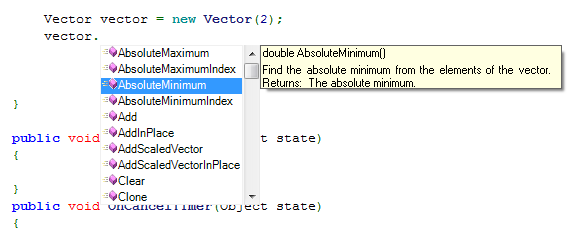Descriptive Statistics |
One principal goal of descriptive statistics is to represent the essence of a large data set concisely. Descriptive statistics provides means, sums, variance, correlations and other functions which describe a data set and provide simple summaries about the sample and the measures. Descriptive statistics aim to summarize a data set, rather than use the data to learn about the population that the data are thought to represent. They form the basis of quantitative analysis of data.
Descriptive Statistics are implemented as statics methods of classes that are designed to operate with the following data types:
Array of Double values
Collection which implements IEnumerable<Double> interface
Exposes the enumerator, which supports a simple iteration over a non-generic collection.
Examples: List<Double>, SortedList<Double>, ArrayList<Double>
Collection which implements IEnumerable<Nullable<Double>> interface
Exposes the enumerator, which supports a simple iteration over a collection of a nullable double type.
Examples: List<Nullable<Double>>, SortedList<Nullable<Double>>, ArrayList<Nullable<Double>>
Methods are implemented separately for these data types, and some methods do not have the corresponding implementation for some types of data. Though array of doubles implements IEnumerable interface itself, but if a method is called for array of doubles, a more efficient version of the method for array of doubles will be used in this case.
User do not need to refer to a particular class that contains method for his data container. Your code just should be preceded with the directive:
using FinMath.Statistics;
Extension Methods mechanism introduced in .Net Framework 3.5 provides all available statistical methods for your data structure:
